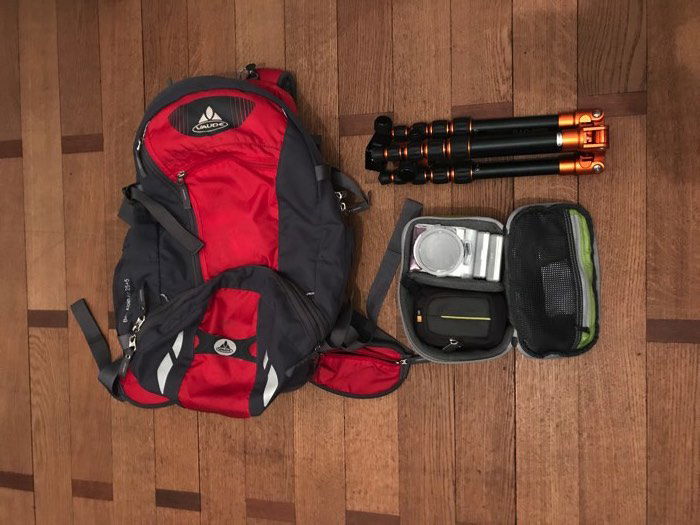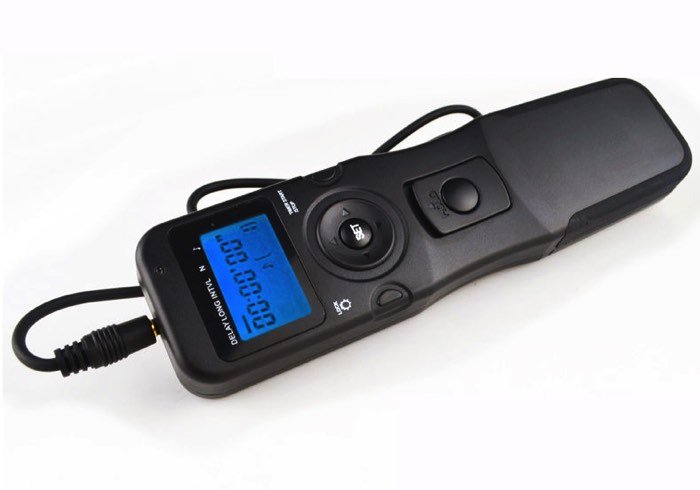The landscape photography accessories you take with you into the field can make the difference between a successful trip and a miserable one. Having the right gear will ensure the safety of your expensive gear. And it will impact the quality of the images that you capture on your trip.
Every photographic genre has its own “must-have” set of accessories. For example, portrait photographers use light modifiers. Landscape photographers should have filters and a tripod, at least.
In this article, I will discuss the most important aspects of landscape photography equipment. And then, I’ll recommend must-have accessories for landscape photography.
To be clear, some of the gear I mention may be better suited to certain kinds of landscape photography than others. But the range of accessories I mention should cover all the bases for your shooting needs in the general wilderness.
The Best Landscape Photography Accessories for Photographers
The best set of equipment for landscape photography is the set you’re willing to carry with you every step of the way.
Packing wisely can be a difficult art to master. Especially if you’re like me and want to have all your equipment with you—just in case.

The key to successful landscape photography knowing what kind of images you are after. When you know that, you can make the right decision about what gear to bring. Not dragging around a ton of “just-in-case equipment” is often a good start.
And remember that you have to carry more than just photography gear. You’ll have to carry stuff for your comfort, too. That includes stuff like water, snacks, extra clothes, a first aid kit, etc.
Must-Have Equipment for Landscape Photography
Tripod

Tripods come in all sizes, weights, and max load capacities. To ensure the best stability for your camera, get a tripod capable of supporting a maximum load that is 20-30% in excess of the actual weight of your gear. Here is an in-depth discussion on tripods and the best tripod heads for landscape photography.
Camera Bags and Carry Systems
Choosing the right camera bag for landscape photography is crucial. That’s both for your comfort and for keeping your equipment safe and dry. Never underestimate the importance of a good camera bag.
For exploratory trips and photoshoots in locations that can be easily reached, the best option is the classic camera backpack. Get one with space for your personal items like water, snacks, clothes, and phone. We recommend the Wandrd Prvke as our top choice as a backpack for landscape photography.
It’s best to avoid the so-called “messenger bags.” They’re not comfortable when they’re fully loaded because the weight is not evenly distributed on your back. And since you’ll be walking to your location, it’s best to stick to a camera backpack.

Every landscape photography journey is different. Some are quick and easy, and others are long and arduous. And that means every landscape photographer will have different needs. As we said above, the Wandrd Prvke is our top recommendation.
But we spent months testing the top camera bags on the market. And we came up with our top seven choices of camera bags for hiking. If the Wandrd Prvke isn’t for you, you will definitely find another great bag on that list for you.

Those backpacks are made to allow you to transport heavy loads for long distances on rough terrain in the most comfortable way possible.
Internal Camera Units (ICU) are a great way to carry your landscape photography gear in a mountain backpack. The Gura Gear Kiboko V2.0 is a fantastic choice that has customizable internal dividers to keep your gear safe. These prevent your gear from knocking about as you hike over rough terrain.

Choose the size of the bag and ICU according to your usual photography gear needs. And it’s best to have a camera backpack that has a dedicated compartment for your personal stuff. You don’t want to find yourself thirsty, hungry, cold, or wet in the wilderness.
Must-Have Accessories for Landscape Photography
Here is a list of the most common and useful accessories used in landscape photography.
Filters
You don’t go out there without filters, period. Filters are, in fact, the only way you have to shape that wonderful natural light you are after.
The right filter can do wonders for your photos. It can eliminate blown-out skies or spice up drab foregrounds. Filters are small pieces of gear that can make a world of difference.
Graduated neutral density filters (GND) are the most common type of filter. They’re used to balance the exposure between the sky and foreground.
Neutral density filters (ND) are used to do long exposures in the daytime. You can also use them to blur moving water and clouds.
Circular polarizer filters (CPL) remove glare and reflections and darken the blue sky.

Protective Accessories for Your Camera
There are some accessories worth buying to protect your equipment from impacts and bad weather.
- Lens hoods. These are useful to reduce flares. They also add an extra layer of protection to your front lens element against impacts.
- Lens cleaning kit. Landscape photography can mean getting dirty. So it’s a good idea to have a cleaning kit to ensure your lens stays clean. A microfiber cloth, a rocket air blower, and a lens pen are enough.
- Rain Sleeve. Camera rain sleeves are cheap and can protect your gear if you get caught in the rain.
Remote Shutter/Intervalometer

If you don’t have these functions built into your camera, you may want to consider getting a remote shutter/intervalometer.
It will reduce camera shake and allow you to be more creative with timelapse and long exposures.
Some cameras can be remotely controlled by a smartphone. While this is great, consider that turning on the camera Wi-Fi will reduce the battery life.
Spare Batteries and Memory Cards
Battery life can be an issue, especially for mirrorless cameras. This is because your LCD screen and electronic viewfinder can quickly drain your battery. Always have an extra battery with you.
Always fully charge your batteries before leaving for any landscape shoot. In cold weather, keep the spare battery in an internal pocket in your jacket to keep it warm. A cold battery will have reduced power, so keeping the battery close to your body improves the battery power.
Memory cards can fill up or get damaged. It’s always a good idea to have a couple extra with you. And a weatherproof SD card case can provide an extra measure of safety.
It’s a good idea to record your photos to more than one memory card. Like they say, never put all your eggs in the same basket. If you are on a photography trip, avoid using a single, high-capacity memory card. If it gets lost or damaged, you lose all of your photos.
Consider having a few “small” cards, alternate them, and keep them safe in different places. And, of course, always back up your photos.
Plastic Zipper Bags and Silica Gel Packets

You can use plastic zipper bags to seal your camera before going indoors after being out in cold and humid conditions. This will allow the camera to slowly warm up, preventing condensation from forming.
Alternatively, once you’re inside, don’t open your camera bag/ICU until a few hours have passed and your gear has warmed up slowly.
You may want to remove your memory card before sealing the camera. This way you can review, edit, and share your photos without having to wait hours for your gear to warm up. Save those little bags of silica gel you find when you buy shoes and other products. They’re the exact same things as the ones you’d buy. So if you just save them, you save a few dollars.
Tripod Feet
Even the strongest of the tripods needs to have good contact with the ground to be stable.
In some conditions, the standard feet on your tripod can sink. This happens in environments such as snow, mud, or wet sand. And on rocks, they can slide. Some tripods allow you to mount different feet for different terrain. Depending on where you plan to shoot, these might be a good investment.
Smartphone
Aside from safety reasons, your smartphone is a great tool to have with you on a landscape photo hike. And it’s always a good idea to have a rugged, waterproof case for your smartphone.
- You can check weather conditions in real-time
- Use GPS and trail maps to navigate the terrain
- Record GPS coordinates during exploratory trips
- Remotely control your camera
- Collect photos and videos for “behind the scenes” documentation of your trip
- Plan where to go next thanks to apps such as Photo Pills and The Photographer’s Ephemeris
- Navigate the night sky thanks to augmented reality with apps such as Sky Guide
- Read the PDF version of your camera owner manual in case you need it
Landscape Photography Gear: Accessories for Comfort and Safety
Staying in the field all day long (or over multiple days) can be challenging. Here is a short list of things you should do or have with you for your comfort and safety:
- Mobile phone and apps. Don’t go out without a phone. And always tell someone where you are planning to go. Some smartphone apps automatically send a request for help to specific contacts at the press of a button or in the event you didn’t reset a timer.
- An old-fashioned map. It’s not a bad idea to take a paper map of the area where you’re shooting. If your GPS/smartphone is out of battery or signal, it can help you find your way.
- Multitool or Swiss Army pocketknife
- First aid kit
- Food and water
- Proper clothing. A rain jacket, fleece, and other items can be useful to stay dry and warm.
- Shelter. Some astrophotography shots require staying out all night. Bring a compact and lightweight tent or camping hammock and a sleeping bag.
-

The author’s hammock and tree straps. A lightweight and compact solution to rest while in the field.
-
- Headlamp. This will help you see what you are doing and where you are going as you shoot night landscapes. They’re great because they keep your hands free to use for other things.
- Power bank. Power banks will allow you to recharge your GPS, smartphone, headlamp, and compact camera while in the field. It’s useful for long expeditions. And you can couple it with a portable solar panel.
Conclusion
Landscape photography is an exciting and rewarding activity. Particularly if you love spending time in the great outdoors. Armed with this information, you know what you to pack.
The first step is figuring out what environments you want to shoot in. Then decide which gear setup is best for you. Remember, the best setup for one photographer might not be the best setup for another.




